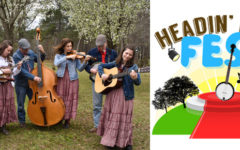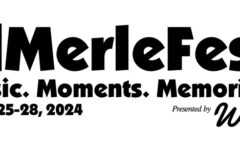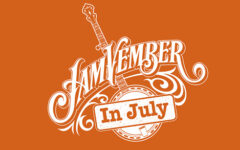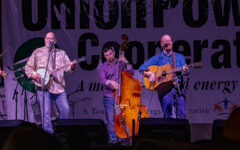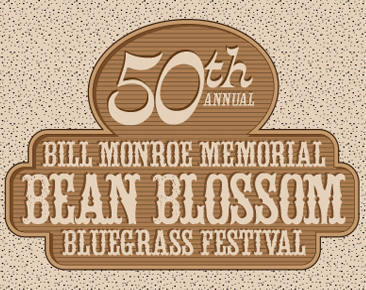
 This coming Saturday – June 11, 2016 – sees the commencement of the 50th Annual Bill Monroe Bean Blossom Bluegrass Music Festival; eight days of top quality bluegrass music at one of the most famous venues in the world, in Brown County, Indiana, eight days of top quality bluegrass music.
This coming Saturday – June 11, 2016 – sees the commencement of the 50th Annual Bill Monroe Bean Blossom Bluegrass Music Festival; eight days of top quality bluegrass music at one of the most famous venues in the world, in Brown County, Indiana, eight days of top quality bluegrass music.
It is the oldest continuously running bluegrass festival in the world and, as the name indicates, it was founded by the Father of Bluegrass Music, Bill Monroe.
There had been music festivals, in the shape of jamborees, at or close to the present site since the 1930s. Following those informal presentations Francis Rund and his family promoted the Brown County Jamboree from 1941 to 1951, making these events more commercialised.
Then on the cusp of the years 1951-1952 Bill Monroe acquired the property from the Runds and his involvement in the music events that took place there lasted through to his death in 1996. In the process, Bean Blossom became known worldwide.
 Monroe started the June festival – the Annual Bill Monroe Bean Blossom Bluegrass Music Festival – in 1966 and by 1971 he had established the festival format that was the model on which other festivals were based. “The June festival grew in size and stayed perennially profitable”, according to Thomas A Adler as he wrote in his excellent book Bean Blossom: The Brown County Jamboree and Bill Monroe’s Bluegrass Festivals (University of Illinois Press, 2011). *
Monroe started the June festival – the Annual Bill Monroe Bean Blossom Bluegrass Music Festival – in 1966 and by 1971 he had established the festival format that was the model on which other festivals were based. “The June festival grew in size and stayed perennially profitable”, according to Thomas A Adler as he wrote in his excellent book Bean Blossom: The Brown County Jamboree and Bill Monroe’s Bluegrass Festivals (University of Illinois Press, 2011). *
After Monroe passed away Dwight Dillman, banjo player and former Blue Grass Boy, purchased the property from James Monroe and through the years he has made considerable improvements to the facilities and services across the grounds. With Dillman, the Bill Monroe Bean Blossom Bluegrass Music Festival and the Brown County Jamboree are in very good hands.
We invited Adler to share a few of his personal highlights through the years …..
I first saw the music park in the fall of 1968, but that was for a Brown County Jamboree show on a Sunday . . .
When I first began to come to the June festivals (in 1969), ALL of it was special and amazing to me, as to so many others: the park, the jamming, the camping, shows and workshops in the barn, the Sunset Jam Session, and the great shows on-stage with so many of my bluegrass music heroes . . . And though it was all new for me, I’ll note that that was the first year in which Tex Logan cooked “barbecue beans” as a free offering to all the festival-goers. He did that for nine years, usually wearing a long white “Texas duster” coat and cooking up the beans in the “bean shack” that was (for a few years) sitting out behind the old barn on the festival grounds:
Bean Blossom 1
1970 – like ALL the early 1970s, was similarly thrilling for those of us who attended and picked and listened and took part . . . That year I did a LOT of parking-lot picking, and was even photographed picking my banjo in a jam with some members of the New Deal String Band, for a newspaper feature article that appeared that August in the weekend magazine of the Chicago Sun-Times:
Bean Blossom 2
But 1971 always comes to mind as a special highlight, because of the appearance of the first “international” bluegrass groups, the Bluegrass 45 from Japan and the Hamilton County Bluegrass Band from New Zealand; and also of course because of the memorable appearances there of “progressive” musicians like John Hartford and the Bluegrass Alliance, and perhaps most of all because of Lester Flatt’s memorable appearance there that year (ending the “Bluegrass Cold War” as some put it) . . .
I believe it was in 1972 when the local market (McDonald’s IGA) began selling t-shirts with “Beautiful Downtown Bean Blossom” on them; that was a parody of a parody, for local business man Carl Brummet had first painted the phrase on the side of one of his tow-trucks, and it was copied by Jack McDonald for the t-shirts; but both of them were imitating the phrase “Beautiful Downtown Burbank” that was repeatedly used on the television comedy show “Rowan and Martin’s Laugh-In.”
Bean Blossom 3
Then came 1973, which was special also, in part because of the presence of the MCA recording folks, who recorded some of the live shows that year, ultimately resulting in the MCA Bean Blossom double-LP album. That effort was repeated in 1979, but the 1979 album was not nearly as successful as the first one.
Bean Blossom 4
After the 1986 festival season, the Monroes had decided for a variety of reasons to tear down the old Brown County Jamboree barn, so in 1987 the festival regulars found things much changed in 1987.
The June festival in 1988 was memorable for another, sadder reason. Six years after Birch Monroe’s death in 1982 (and the effective cessation of the Sunday Brown County Jamboree shows), Bill announced in April 1988 that he had decided to sell the park; so the June festival that year was sort of sad, and attendance (which had slowly diminished a bit) was back up that year, since people thought it would be the last Bean Blossom June festival after 22 years. But later Bill changed his mind, and the June festivals continued during the era of “Bill and James Monroe’s Festival Park.”
1992 was another milestone year, which saw the replacement of the old outdoor stage (built just before the 1968 festival) by a much larger new stage, still in use; and also that year the Monroes moved the Bill Monroe Museum and Bluegrass Hall of Fame (which had struggled in its original Nashville, TN location) to a new building they caused to be built in the music park, and they also added a reconstructed “Uncle Pen’s cabin” in the vicinity of the new Museum building.
1998 was a very important year for the June festival, for it marked the beginning of Dwight Dillman’s ownership of the music park, and his dedication to improving the facilities in many ways, with new roads, “street signs” identifying bluegrass and country-music heroes, and a vastly-improved infrastructure for recreational vehicle (RV) campers. Dillman also changed the line-up of artists rather dramatically beginning in that year, and his innovations and expansion of the park continue to this day.
It’s hard for me to isolate or pinpoint any other “highlights” since the Dwight Dillman era began, though I feel he has really worked continuously to revitalize the entire music park, and he remains open to refreshing every aspect of the place. While he did consider selling the park beginning in 2007, he seems to have given over that intention, and is moving ahead now with great plans for the upcoming 50th June festival.
For the performance schedule and other information about the 50th Annual Bill Monroe Bean Blossom Bluegrass Music Festival visit the Bill Monroe Music Park website.
![]() The dedication of the new Indiana historical highway marker sign that heralds the Brown County Bluegrass Music park took place yesterday, June 7, 2016.
The dedication of the new Indiana historical highway marker sign that heralds the Brown County Bluegrass Music park took place yesterday, June 7, 2016.
*Full citation: Bean Blossom: The Brown County Jamboree and Bill Monroe’s Bluegrass Festivals, by Thomas A. Adler (Urbana: University of Illinois Press, 2011. Pp. xxii, 248. Illustrations, notes, list of interviews, bibliography, index. $24.95.)

